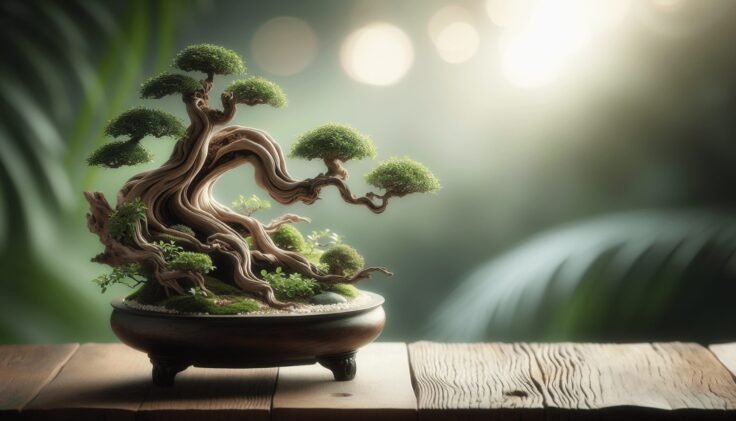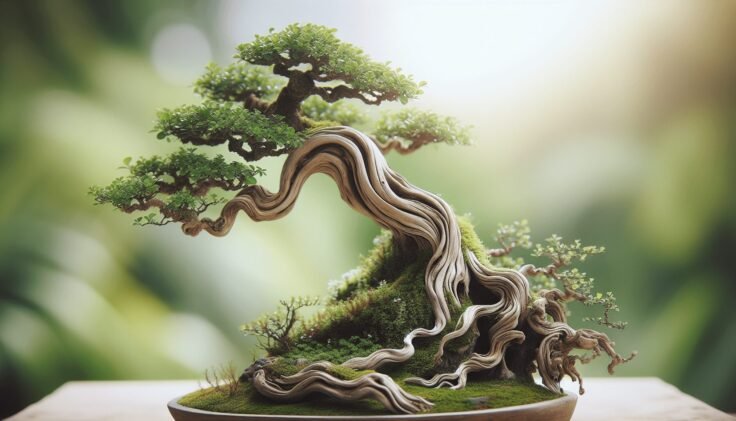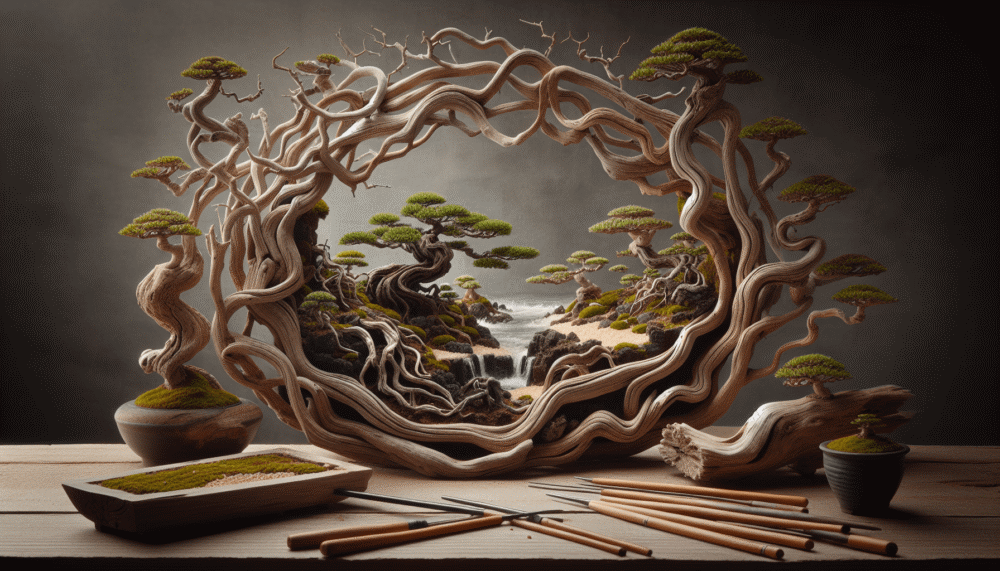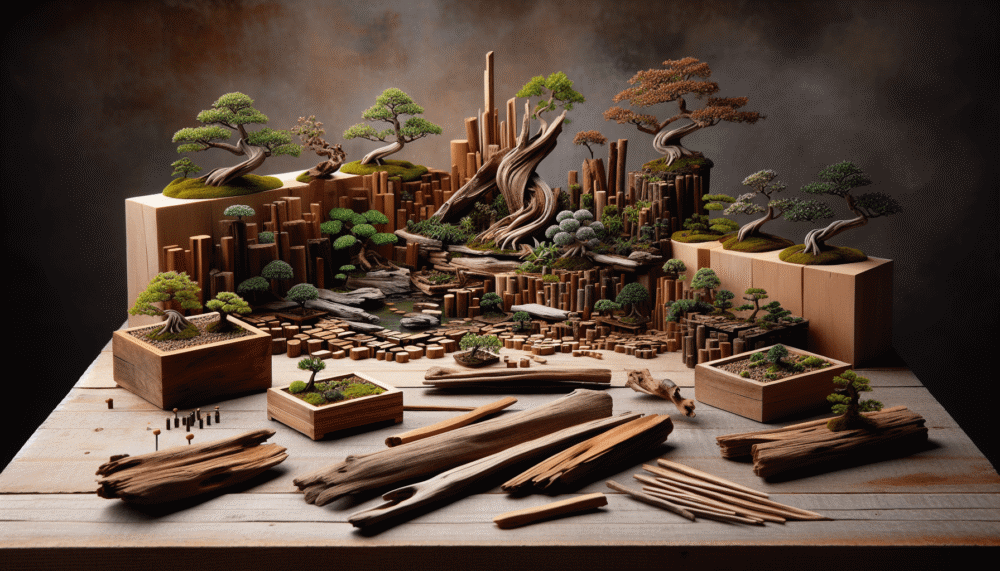Have you ever gazed at a piece of driftwood and wondered what stories it could tell? Imagine combining the mysteries of driftwood with the serene elegance of bonsai trees. Discovering the art of driftwood bonsai might just be the captivating hobby you’ve been searching for. This marriage of natural elements brings an artistic challenge that rewards you with a uniquely beautiful creation. But what exactly is driftwood bonsai and how does one embark on this artistic venture? Let’s explore together!
Understanding Driftwood Bonsai
Driftwood bonsai is a fascinating style within the world of bonsai. It is a hybrid art form that combines elements of driftwood — often found on beaches, having been shaped by time and the forces of nature — with the delicate allure of bonsai trees. The practice involves using the organic architecture of driftwood to nurture and display a bonsai tree.
The Historical Context of Bonsai
Bonsai has a rich history tracing back to ancient China, where it was initially known as ‘penjing’. This art form was then popularized in Japan, where it evolved into the bonsai practices we are familiar with today. Practitioners sculpt miniature trees symbolizing harmony, patience, and knowledge. Understanding traditional bonsai can enhance your appreciation for the driftwood adaptation.
What Makes Driftwood Bonsai Unique?
Driftwood bonsai art diverges from traditional practices by integrating the naturally weathered wood with living bonsai, creating a symbiotic aesthetic. The wood serves as both an artistic canvas and a support structure, leading to intriguing designs where foliage seems to emerge from ancient, twisted wood. This integration of living and non-living elements sets driftwood bonsai apart, offering you the opportunity to craft living sculptures that tell stories of endurance and beauty.
Selecting the Right Driftwood
Choosing the right piece of driftwood is a crucial first step in creating a successful driftwood bonsai. Not all driftwood pieces are equal, and selecting a suitable one will be vital for your artistic and horticultural success.
Ideal Characteristics of Driftwood
When choosing driftwood, look for pieces that have visual interest with natural curves, twists, and character. You want a piece that evokes strength and timelessness, as this will serve as the central structure of your creation. The wood should be thoroughly dried and free from decay to ensure it serves as a lasting part of your bonsai.
Preparing Driftwood for Use
Before using driftwood, it is essential to clean and treat it. Start by removing any loose material and washing it to eliminate salt and potential pests. Then, let it dry completely. You might also consider applying a wood preservative to ensure longevity, since untreated wood may degrade over time.

Choosing the Perfect Bonsai Tree
The choice of bonsai tree species will significantly influence your project. Various species have distinct growth patterns, coloration, and maintenance needs.
Suitable Trees for Driftwood Bonsai
Ideal species for driftwood bonsai are those with small leaves and slow growth that can integrate smoothly into the aesthetic of your driftwood. Species like junipers, pines, and certain elms work well due to their resilient nature and ability to thrive in various conditions.
| Bonsai Tree Species | Characteristics |
|---|---|
| Juniper | Hardy, rugged appearance, capable of growing around driftwood. |
| Pine | Long lifespan, develops intricate branch patterns. |
| Elm | Versatile and adaptive, fine leaves. |
Plant Care and Maintenance
Once you have chosen the right species, ensure you understand its specific care requirements. This may include sunlight exposure, watering schedules, and pruning techniques. Keeping your bonsai tree healthy is critical to your driftwood bonsai’s success, and this entails a balance of adequate sunlight, frequent irrigation without overwatering, and regular trimming.
Designing Your Driftwood Bonsai
Weaving your chosen tree with the driftwood requires creativity and precision. The ultimate goal is to harmonize both elements, drawing out the best in each and resulting in a cohesive piece.
Attaching the Tree to Driftwood
Start by gently positioning your bonsai tree onto the driftwood. Wire wrapping or threading roots through existing crevices can secure it. Carefully plan your design, allowing the tree’s growth to enhance the natural curves of the wood. Ensuring the tree is stable but not restricted by its bindings is key.
Aesthetic Considerations
Consider how your driftwood bonsai will be viewed. Often, intimate arrangements showcasing the union of driftwood and bonsai are exhibited best from select angles. Balance visual weight and texture so that neither element overpowers the other, allowing both to tell their story within the composition.

Long-term Care and Maintenance
Once your driftwood bonsai is complete, maintaining its beauty over time will require ongoing care and attention.
Pruning and Shaping
Regular pruning is essential for sustaining the shape you envision. Like traditional bonsai, driftwood bonsai needs careful trimming of branches and roots. This not only maintains aesthetic appeal but also ensures the tree does not outgrow its supporting driftwood.
Monitoring Health
Monitor your driftwood bonsai’s health vigilantly. Keep an eye out for pests or diseases, and be responsive to changes due to environmental conditions. Regular health checks will aid in keeping your bonsai thriving and beautiful.
Appreciating Driftwood Bonsai in Daily Life
The presence of a driftwood bonsai can enrich your environment, offering both a visual focal point and a source of contemplation.
A Symbol of Resilience
Driftwood bonsai symbolizes resilience by merging elements long battered by nature with flourishing life. It’s a daily reminder of the beauty and perseverance that come from adversity. This art reflects many of life’s challenges, encouraging patience and adaptation.
Incorporating into Home Decor
Driftwood bonsai makes a stunning addition to home decor. Place your creation in a spot where it can be easily appreciated and cared for — such as near a window for sunlight. Your bonsai can become a natural centerpiece, complimenting modern and traditional aesthetics alike.
Expanding Your Driftwood Bonsai Collection
Once you’ve successfully created your first driftwood bonsai, you may find yourself eager to expand your collection, experimenting with different species and wood forms.
Exploring Different Styles and Techniques
As you gain familiarity, explore variations in styles and techniques. Each new piece of driftwood offers a chance to develop unique designs. Consider using different species or playing with multiple bonsai trees on a single wood piece for diversity.
Sharing Your Work with Others
Sharing your passion for driftwood bonsai with others can be as rewarding as the creation process itself. Participate in bonsai clubs or online communities where you can exchange ideas, gain insights, and showcase your creations.
Conclusion
The art of crafting a driftwood bonsai offers a unique blend of natural beauty and personal creativity. It invites you, as an artist and gardener, to mold elements formed by time and elements yet to fully grow. Creating driftwood bonsai can become a meditative practice, a living art piece, and a testament to nature’s enduring allure. As you cultivate your piece, you are not just growing a plant, you are nurturing a living sculpture that embodies stories of transformation and resilience. So why not start crafting your own story today?












